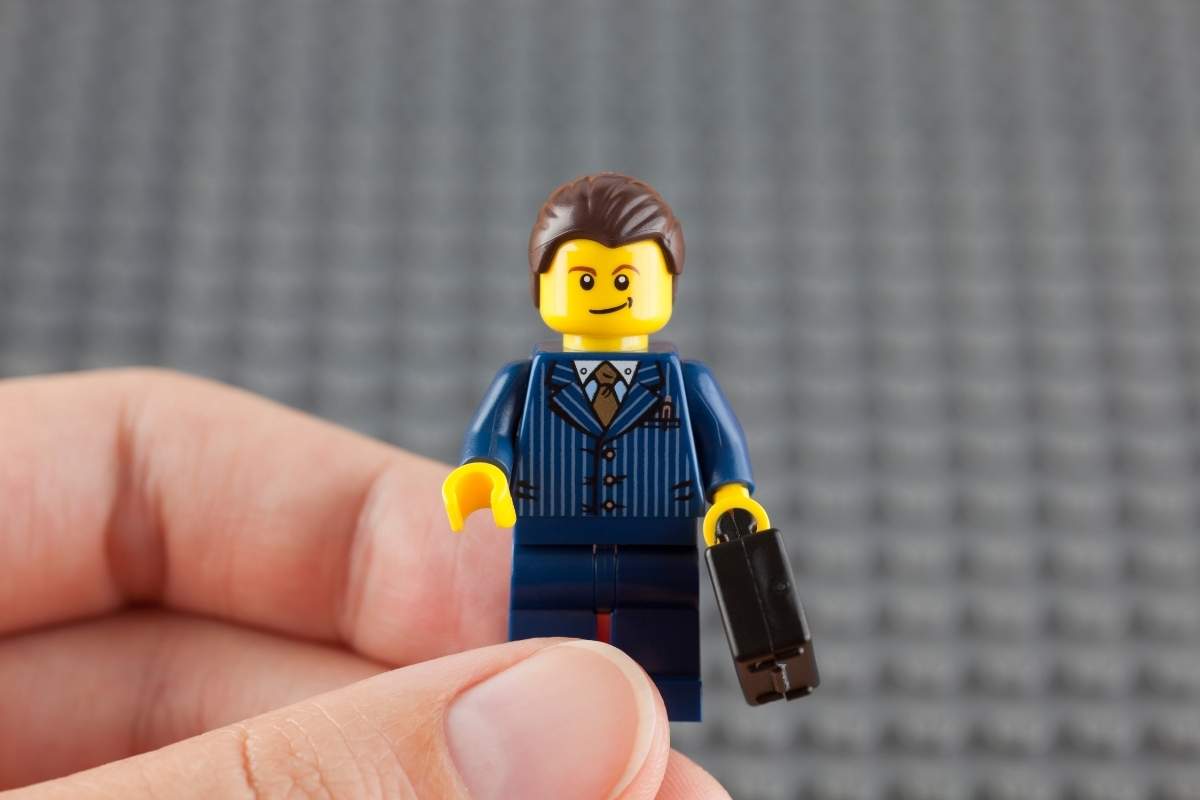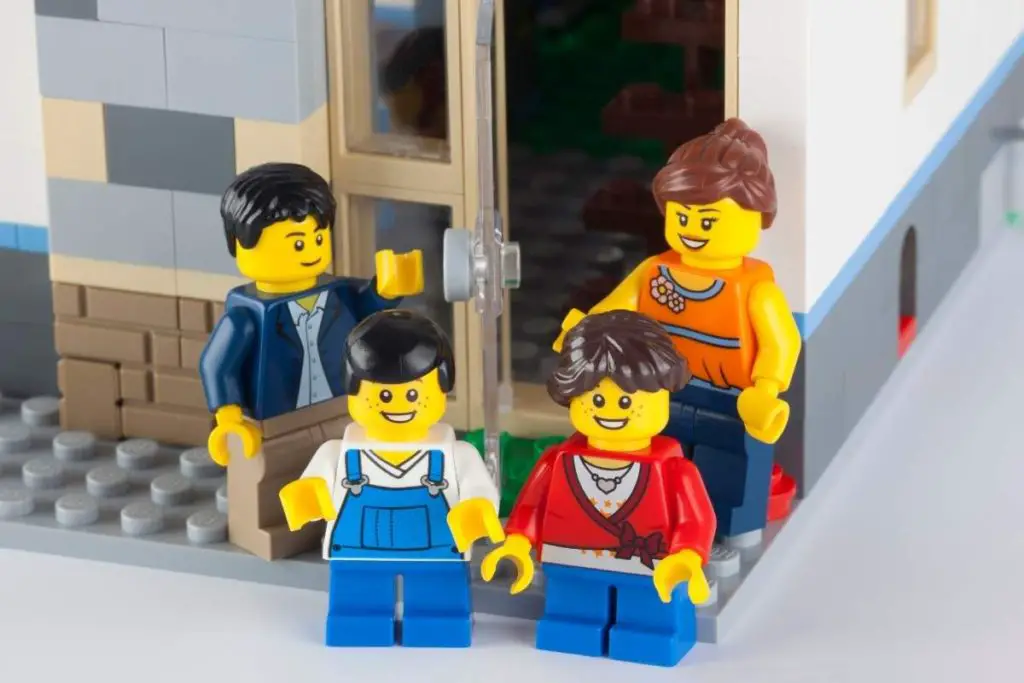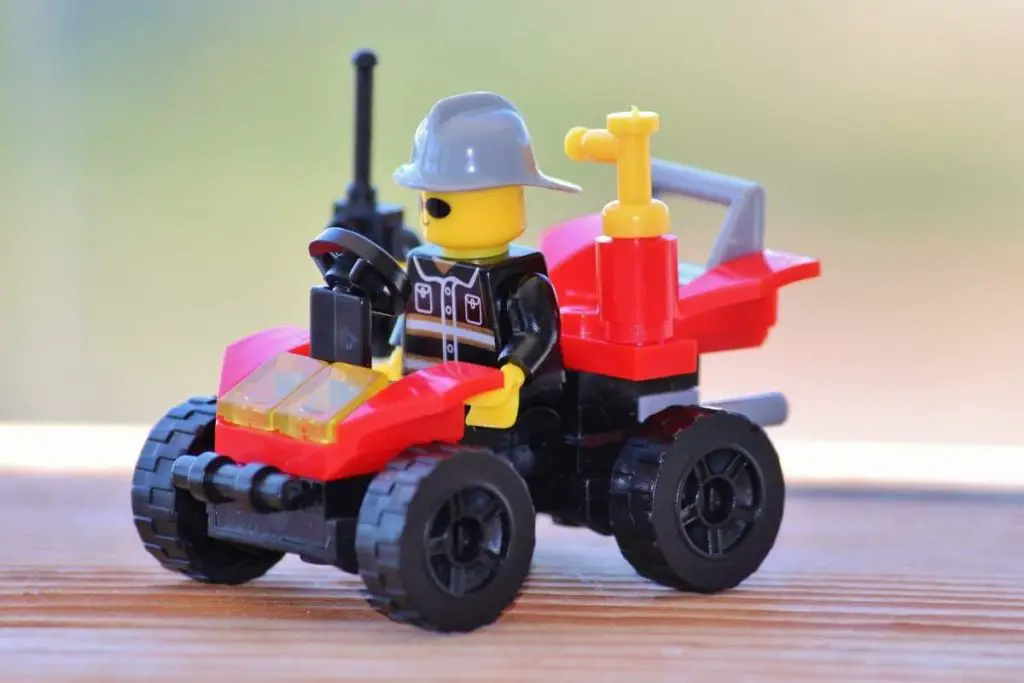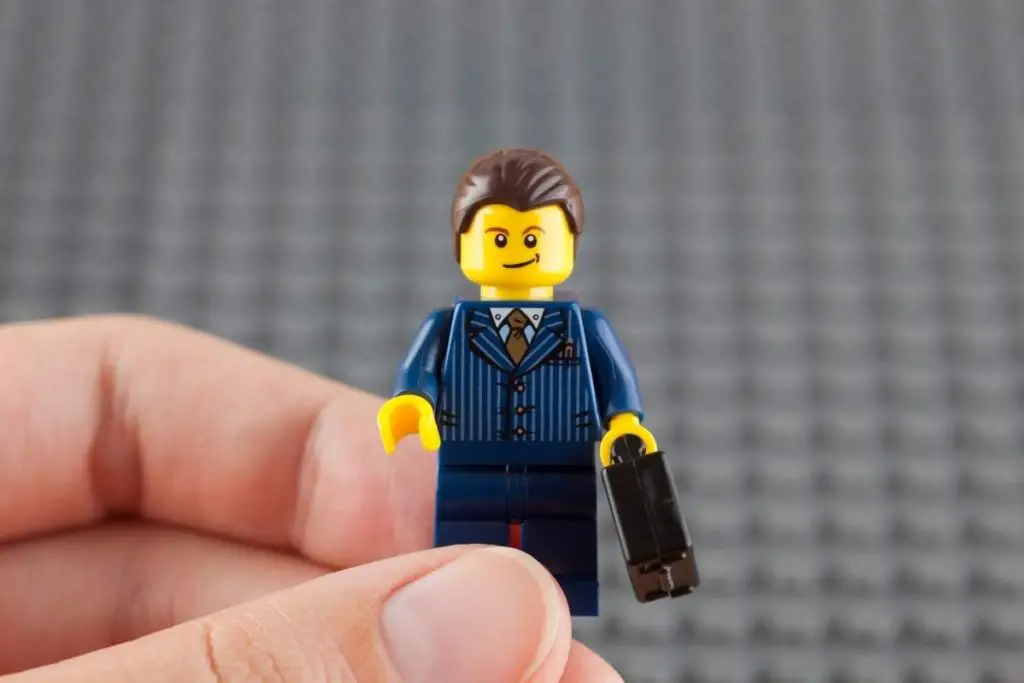
The first LEGO Minifigure – a tiny police officer painted yellow and black — was released in 1978. Many years later, those little minifigs have become a mainstay in LEGO sets sold worldwide, and they are definitely here to stay. So far, LEGO factories in Europe, Mexico, and China have produced billions of minifigures and their numbers are steadily increasing. They have also become some of the most sought-after LEGO elements as the value of some minifigs has increased over the years.
Unfortunately, some LEGO competitors have resorted to producing cheap knockoff LEGO minifigures to make a profit. Those knockoffs look almost identical to real LEGO minifigs in many ways. That is why it is very important that you know how to tell if a LEGO minifigure is fake.
Fake minifigures will often have some visible signs that they are not made with the same high quality standards as official LEGO minifigures. There are a number of signs that we can look out for. These include the build quality and material, print and color quality, the official brand logo, the print quality of the face piece, and other indicators.
So let’s jump in and talk about how to tell if LEGO minifigures are fake or inauthentic. There are ten major signs that we can look at.
Material
First up – the minifigure’s material. It’s no secret that LEGO elements are made of ABS (acrylonitrile butadiene styrene) plastic. Its principal component, acrylonitrile, ensures that the toys are heat and chemical resistant. Meanwhile, the compound butadiene ensures that the elements, when stacked together, are strong and can withstand pressure. Lastly, the chemical styrene gives the LEGO elements their unique gloss.
Many toy manufacturers also use ABS plastic as material, but the plastic that LEGO uses is more durable than others. LEGO bricks (as well as minifigures) can withstand a lot of pressure. Unlike cheap knockoffs that break apart when pressure is applied, LEGO bricks and minifigures simply flatten, ensuring that sharp debris that could puncture or your child does not scatter on the floor.
Authentic minifigs also do not look or feel flimsy at all. Although they are small, they do feel a little heavier than cheap knockoffs.
If you’re buying online, it can be hard to use the material aspect to determine if the LEGO Minifigure you’re looking at is counterfeit because you can’t physically test it.
The good news is there are other factors you can check to ensure that you’re only buying authentic ones.

Print and Color Quality
Another way to determine if the minifig you wish to buy is fake or real is by checking its print and color.
The prints on legit LEGO minifigs are precise and finely detailed, and the colors are vibrant. The print quality of fake minifigs, on the other hand, can often be poor. Some of the details do not stand out, while some are a shade lighter or darker than the original.
If you’re buying the minifig from an online seller, you can always pull up the original photo from the LEGO website to compare them in detail.
Note that colors may fade over time, and even true LEGO minifigs may lose some vibrancy over time, particularly if they were stored in an area with a lot of sunlight, for example. Keep that in mind if the minifigs you’re buying are used or vintage. They may be authentic but just slightly worn.
However, if you are buying new minifigs and the colors look very slightly off, then they may be counterfeit.
The LEGO Group Logo
Another way you can spot a fake minifig is by checking if it has the logo stamped on different areas.
Authentic minifigs have the iconic LEGO logo stamped on the head piece at the to stud, as well as beneath it. Remove the minifig’s head gently, and you’ll see a logo stamped on the neck stud.
The LEGO logo is also stamped between the minifig’s leg studs, as well as its sole. You’ll also see the logo inside the helmet if the minifig has one.
Minifigure Stand
Some LEGO Minifigures come with a stand, which is a small plate piece with four studs on it. If the seller includes the stand, you can verify the authenticity by checking the studs and see if the official LEGO logo is stamped on each individual stud.
If the studs don’t have ‘LEGO’ stamped on them, then you are definitely holding a counterfeit.
Fit
Copycat companies that make counterfeit LEGO pieces make sets and minifigures that do fit with regular LEGO. However, there is often a slight difference to just how well the pieces fit together.
Fake pieces can sometimes feel a little more loose when they are being built, and don’t fit quite as snug as real LEGO pieces. This is also true for minifigures.
If you receive a minifigure and it feels like it doesn’t stand right on your official LEGO bricks or plates, or if it doesn’t seem to hold accessories as well, then it is possible that the minifigure is counterfeit.

Fabric
If the LEGO minifig has a cape, then check that, too. The colors of the capes of real LEGO minifigs are more vibrant.
You can also sometimes notice a difference in the way the capes are cut. Counterfeit cape pieces can be less precise and look a little less refined than official minifigure caps.
Neck Stud
Another way to tell if the LEGO minifig you have is legit is by checking the neck stud. To do this, remove the minifig’s head gently and examine the neck section attached to the torso piece.
Many official LEGO minifigures have a marking on the front of the neck, that will either be in a lighter color or a darker color than the rest of the torso piece.
If the neck stud comes in one solid color, then it’s possible that you have a counterfeit one.
This is not guaranteed, because some official LEGO minifigures that are manufactured in China (including collectibles, keychains and other items) have a single color neck piece. However, the majority of regular minifigures have a contrasting color to help the machines recognize the front of the torso during manufacturing. This is not the case for counterfeit minifigs.
Corners
If you take a look at a legit minifig closely, you’ll see that its corners are smooth and gently rounded. This shows the precision and quality of the manufacturing and the close attention to detail that The LEGO Group have.
In comparison, fake minifigs have sharper, more defined corners. This can be a clear sign of a fake minifig.
Face
The face print on fake minifigs can often look a bit different than the authentic LEGO branded minifig.
This can sometimes be one of the easiest ways to tell a fake minifig from a real one. If it has a face print that you can see in the photos, compare it to the face from official LEGO pictures.
Look carefully at the positioning of every feature on the face. Often there will be some subtle differences. For example, the shape of the eyes or the mouth may be a little bit off. The eyebrows may be a bit too raised. Or any other number of differences could occur.
Look carefully and you should be able to spot a fake by analyzing the face print.
Price
Last but not least is the minifig’s price. If you’re a long-time LEGO collector, then you already know that legit minifigs can often come with a high price tag. This is due to the rare and collectible nature of many minifigures when they are no longer actively being produced by The LEGO Group and become hard to find.
This creates an attractive environment for counterfeiting companies, because they can continue to manufacture fake versions of older more scarce minifigures, and then sell them well below the market price.
If you see a deal on a rare or sought after minifigure that is well below the market price and seems too good to be true, this can be a clear indication that it is not a real and official version.
Most minifigs are not pricey, but they’re not so cheap either. If it’s too cheap, then it’s may be too good to be true and chances are you have a counterfeit one in your hands.
That doesn’t mean you should ignore all deals! It is of course possible to find exclusive and rare minifigures at great prices, but when the price seems extremely low, it’s time to also use some of the other indicators we discussed above to check if it is real or not.

Selling your Authentic LEGO Minifigures
Check this article we’ve written about some tips on selling LEGO online. You can also check us out on Youtube for more detailed strategies about LEGO investing and reselling.
If you have any questions about LEGO reselling, then head on over to our free Facebook group and join in the discussion there.
